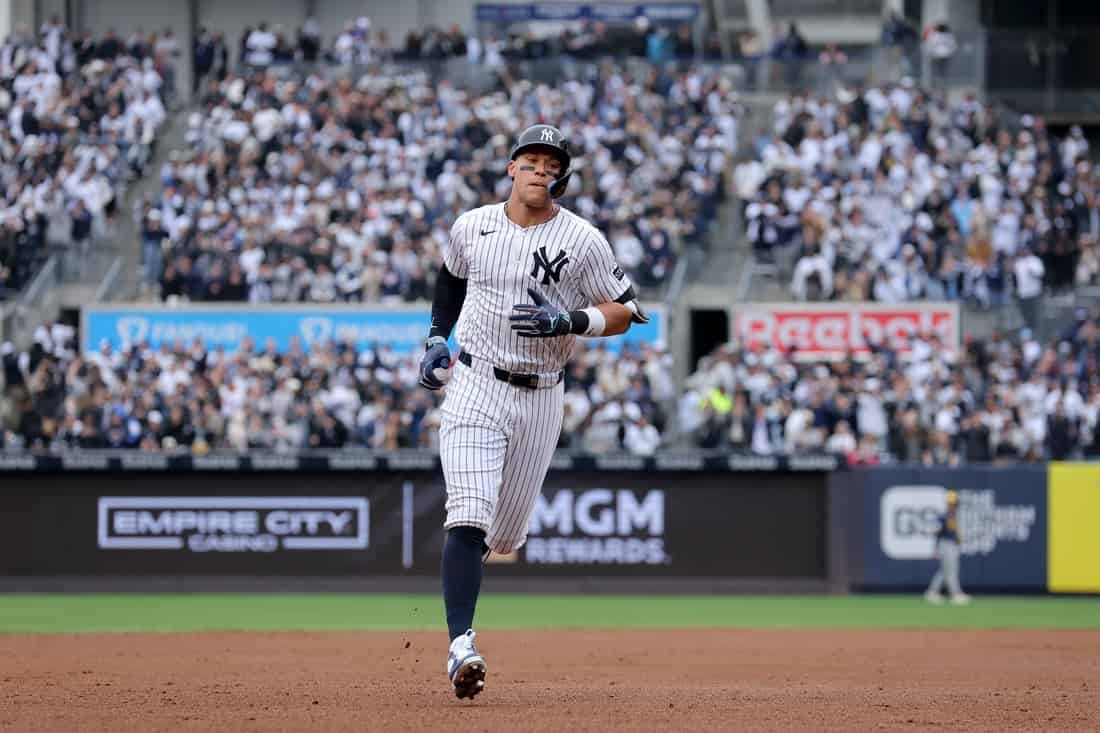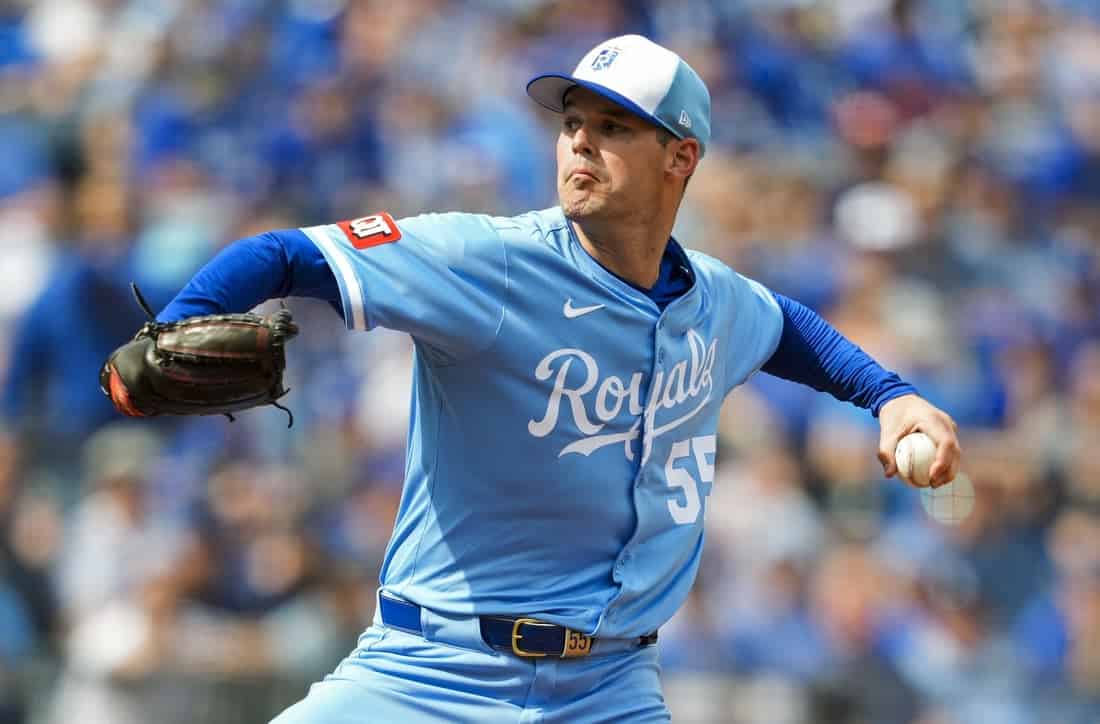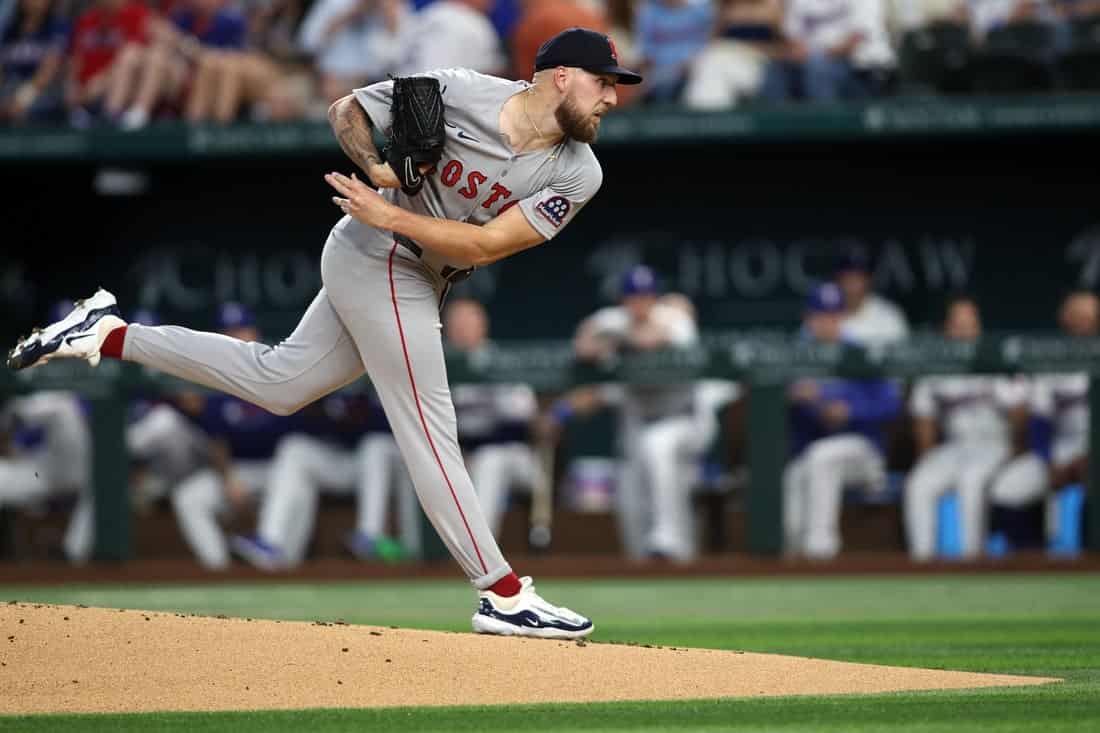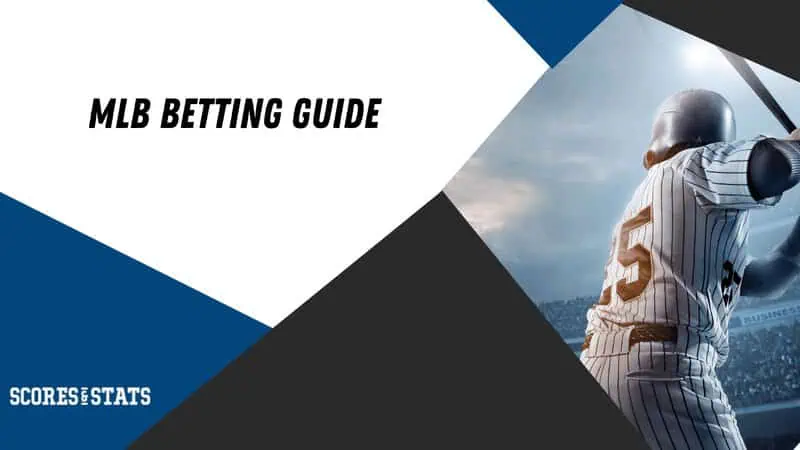MLB Betting Guide
This MLB betting guide will give you all you need to know to start placing run lines and props on professional baseball in no time.
We take a look at the kinds of wagers MLB bettors have at their disposal, how to read odds, as well as how to find betting value among the sportsbook chaff. Plus, we’ll give you the scoop on some big betting events and even offer pro tips for making more money with your MLB wagers.
Best MLB Bets Today

New York Yankees vs Arizona Diamondbacks Picks and Predictions April 2nd 2025
Scores And Stats

Milwaukee Brewers vs Kansas City Royals Picks and Predictions April 2nd 2025
Scores And Stats

Baltimore Orioles vs Boston Red Sox Picks and Predictions April 2nd 2025
Scores And Stats
Understanding MLB Betting
Major League Baseball (MLB) offers a wealth of opportunities for sports bettors. More than 2,000 games are played each year and 30 teams compete, the MLB season is one of the most expansive in the US.
The popularity of MLB betting is also undeniable. The commercial revenue tracker from the American Gaming Association shows that sports betting in general is growing quite rapidly, with 2024’s numbers being up by as much as 24% from last year’s numbers.
MLB betting offers a unique set of challenges and opportunities compared to other sports.
Unlike basketball or football, baseball games are often lower-scoring, which can lead to unexpected outcomes. Here are a few additional ways that the MLB provides a different betting experience from other sports:
- Pitching is Crucial: Strong pitchers can turn the tide of a game, and relief pitchers in the bullpen are just as important as starting pitchers.
- Picky Umpires: Some umpires have different strike zones, which can impact pitching and hitting.
- Unique Ballparks: While most ballparks are the same, the climate, sun position, and wind of a specific park can change the course of play.
- Home Field Advantage: Home field advantage in the MLB is a strong factor, which is why best-of series offers the team with the better record home field advantage in the fifth, sixth, and seventh games.
Types of MLB Bets
Baseball, specifically the MLB, is one of the most prominent sports in the US for sports betting action. While you’ll find most of the traditional wagers on MLB games (moneyline, totals, etc.), there are also some unique bets like the run line and reverse run line that give bettors a bit more action.
Here’s a look at the most common types of MLB bets:
Moneyline Bets
AA moneyline wager in Major League Baseball is the most straightforward way to bet on a game. It focuses solely on which team will win, without considering the margin of victory.
Moneyline odds are displayed with a plus (+) or minus (-) sign in front of a number. The favorite team will have a minus (-) sign next to their odds. This indicates how much you need to wager to win $100. For example, “-150” means you’d need to bet $150 to win $100.
The underdog team will have a plus (+) sign next to their odds. This indicates how much you would win by wagering $100. For example, “+120” means a $100 bet would win you $120 in profit, for a total return of $220.
Here’s an example:
In this example, you’d need can wager $100 on the Nationals for a $163 return if they win, or you can bet $183 on the Padres for a return of $100 if they win, since they are the betting favorite.
Run Line
A run line wager, also known as a run spread, goes beyond simply picking the winner. It considers the margin of victory and is essentially baseball’s equivalent of a point spread. Here’s how it works:
- The Favorite Gets a Handicap: The oddsmakers designate a favorite team and give them a disadvantage, typically -1.5 runs.
- Underdog Gets a Head Start: The underdog gets a head start of +1.5 runs.
Let’s take a look at an example:
In this scenario, if you bet on the Padres (-1.5), they need to win by two or more runs for your bet to win. If you bet on the Nationals (+1.5), they can either win the game outright or lose by just one run, and your bet would still be successful.
Run line wagers offer a way to add complexity and potentially higher payouts to your MLB bets compared to just picking a winner. However, they also come with a bit more risk.tially win by backing a strong underdog you believe can keep it close, or by going with a favorite you think will win convincingly.
Reverse Run Line
A reverse run line flips the odds of a traditional run line, but it’s not as common a wager as the run line. Here’s how it works:
- Favorite Gets a Head Start: Instead of giving the favorite a disadvantage, a reverse run line would give them a head start, typically +1.5 runs.
- Underdog Needs a Bigger Win: The underdog would then become the favorite needing to cover the spread, usually needing to win by two or more runs (-1.5).
While it’s not a standard option, some sportsbooks might offer similar bets under the name “alternate run lines.” These alternate lines offer different margins of victory for both teams with adjusted odds.
Sportsbooks aim to get roughly equal bets on both sides to maximize their profit. A true reverse run line with a big favorite getting a head start wouldn’t attract enough bets on the underdog for them to make money.
However, the reverse run line odds can provide some context if you’re thinking about handicapping a game. If you believe a strong underdog has a good chance to win by multiple runs, then a traditional run line with the underdog getting points might be an attractive betting option.ager.iple, such as the Puck Line and props. As we mentioned, for total wagers, you can bet on many factors, not just the total points.
Totals & Over/Unders
Totals and over/under bets allow you to wager on the specific scores for games and seasons, as well as stats on individual players.
- Over: You win if the final combined score of both teams is higher than the total. (Ex: Line = 8.5 runs, final score = Total runs 9 – You win the over bet)
- Under: You win if the final combined score of both teams is lower than the total. (Ex: Line = 8.5 runs, final score = Total runs 5 – You win the under bet)
For example, in the above wager on the Braves vs. Cardinals, you’ll see that the over/under is estimated to be 8.5 points for the total of both teams’ scores, with the Braves at -115 and the Cardinals at -105. Despite not being in the plus, the Cardinals are the underdogs here.
If you were to wager on the Cardinals on the under, they would need to win the game with less than 8.5 runs for you to win your bet.
This type of wager can be applied to all kinds of scenarios and is often broken up by inning as well. You can bet over/under totals on home runs, number of innings, etc. It is often considered to be a less risky bet and is a popular choice if you’re not rooting for a specific team and just want action on the overall outcome.
Props & Futures
Prop wagers are typically yes/no moneylines or over/unders. The success of a prop bet is not reliant on whether a certain team wins the game and is instead focused on a smaller event, such as strikeouts or home runs.
There is a wealth of MLB props bets you can place on players and games:
Player props – Player props can be broken down into hitting or pitching, with hitting bets being things like “Will Player A hit a home run?” or “Will Player A record over/under a certain number of RBIs?”. Pitching wagers might involve strikeouts or earned runs allowed.
Game props – Game props look at the matchup as a whole instead of by team or player. Some wagers you might commonly see include “Will there be extra innings?”, “Who will win the first inning?”, and “What is the margin of victory?”.
If you’re interested in betting on baseball props, you can learn more in our MLB Prop Betting Guide.
How to Identify Good MLB Wagers
Now that you have a firm understanding of the kinds of wagers that the MLB has to offer, let’s talk about how to find value.
Sportsbooks are out to make money, pure and simple, so not all of their moneylines or over/unders are worth betting on. By using these strategies to find value, you can avoid some of the common MLB betting mistakes.
Read Post-Game Analysis and Player Stats
After every game, sports news stations and media outlets have a group of experts hop on the air to discuss the events of the game. While some of these folks are just riffing off their colleagues, some people have valuable insights into future games or player careers.
Spend some time reading and listening to what sports broadcasters have to say. This might give you an edge over those bettors who simply look at the MLB odds on a specific wager.
In addition, use the MLB’s official website to get a more well-rounded view of each team and player’s performance.
Bet Low Vig Wagers
The vigorish, or vig, of a sports bet, is built into each wager a sportsbook offers and indicates how much they stand to win from each wager. Here’s a look at how to use implied probability to calculate the vig:
- For negative odds, use this formula: Implied Probability = (Absolute Value of Odds) / (Absolute Value of Odds + 100) x 100.
- For positive odds, use this formula: Implied Probability = 100 / (Odds Value + 100) x 100.
Once you’ve found the implied probability for both sides of the wager, add those numbers together, then subtract 100 to find the vig. Here’s an example:
Let’s say a game has odds of -110 for Team A and -120 for Team B.
- Team A Implied Probability: (110) / (110 + 100) x 100 = 52.38%
- Team B Implied Probability: (120) / (120 + 100) x 100 = 54.55%
- Total Implied Probability: 52.38% + 54.55% = 106.93%
- Vigorish: 106.93% – 100% = 6.93%
By betting on wagers with a lower vig, you’re ensuring that you’re making more money. Typically, seasoned sports bettors classify anything with less than -110 to be low vig, and anything higher than -110 to be higher vig. In the example above, the vig is high because it’s more than the standard 4.7% on a -110 wager.
Use a Bet Analyzer Tool
Sports betting has grown in recent years, and there’s a wealth of information about every wager available online. There are whole businesses dedicated to analyzing MLB run lines and props, and their information is often backed by tried-and-true formulas and data.
Signing up for a bet analysis tool can take some of the math out of vig calculation, and can help you determine the probability of a bet’s success. Plus, many bet analyzer services, like Scores & Stats, have pro handicappers on the payroll, so you know you’re getting high-quality information.
Big MLB Events to Take Advantage Of
Even though the MLB season has 2,430 games in total, there are even more betting opportunities during the finals season and the draft. Here’s a look at some of the biggest events for MLB bettors.
MLB Draft (June):
This is where amateur baseball players are selected by MLB teams to join their organizations. It’s a crucial event that shapes the future of the league, with teams hoping to draft the next generation of superstars. Betting on the draft often includes futures and moneylines on whether star college players will be drafted 1st overall, and to which team.
All-Star Game (Mid-July)
This showcases the best players in MLB, with one team representing the American League and the other representing the National League. It’s a night of celebration for MLB’s top talent, featuring exciting events like the Home Run Derby. The Derby itself presents an exciting betting opportunity, where top players from across the US are competing for the title.
League Championship Series (October)
The LCS is the final step before the World Series, where the winners of the American League and National League Division series compete for the final two teams that will go to the World Series. You’ll find wagers on every game during the LCS, as well as props on who will win the AL/NL division championship awards.
World Series (October)
This is the pinnacle of the MLB season, a best-of-seven championship series between the American League champion and the National League champion. Sportsbooks often offer a wider range of props on the World Series, including who will win the MVP awards after the games have concluded.
Tips for Betting on the MLB
Every bettor has room for improvement, even if you have a winning track record. Here are some of the top tips our handicappers use to stay ahead of the curve:
Sharpen Your Analysis

While batting average and ERA are important, delve into advanced metrics like WHIP (Walks and Hits per Inning Pitched) and FIP (Fielding Independent Pitching) for a more complete picture.
You should also consider the park for each game. Some ballparks favor hitters, while others favor pitchers. Understanding these factors can help you adjust your over/under bets.
Focus on Value, Not Just Favorites

It’s often tempting to bet the favorite for every game, but don’t chase the favs blindly. Upsets often happen in baseball, and it can be dangerous to rely on the sportsbook’s assumptions.
Look for situations where the odds seem skewed in favor of the favorite, and consider the underdog if the historical stats line up.
Pay a Professional

Unless you’re prepared to spend hours combing through team and player stats, it might be worth your while to subscribe to a handicapping service. There’s often a lot of privileged data that you don’t have access to that goes into a site’s picks, and having access to those predictions can give you a boost.
Just make sure to factor the price of the handicapping service into your betting budget.
Hit a Homer with MLB Picks and Data
Baseball may be America’s pastime, but all the data suggest that betting on baseball might be America’s new favorite hobby.
When you start betting on the MLB, remember that reading stats and news, identifying low-vig wagers, and utilizing online tools can significantly boost your chances of success.
If you’re serious about making money with MLB betting, be sure to check out some of our picks. Our handicappers are busy around the clock, finding you the best odds possible. Sign up for our premium subscription to have full access to their data and predictions, and take your MLB betting to the next level.




